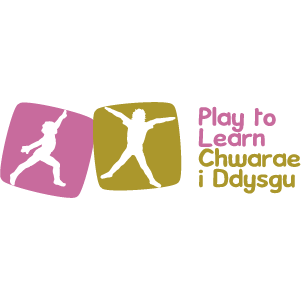
Instructions
The skip is a rhythmical movement involving a step-hop on one leg, then transferring weight to other foot to repeat the pattern. Children often skip spontaneously in response to music, strong rhythms/beats or to express happiness. It is included in many traditional dances.
- Step forward and hop onto that foot
- Bend non-stepping leg and lift it up in front of the body
- Swing arms in opposition to the legs
- Push strongly upwards and forwards during hop phase, using arms to assist and gain height and distance
- Land softly on the balls of the feet
- Keep the head up, looking forwards
- Repeat with the other foot

Safety
Ensure…
- the area is free from objects
- the surface is not slippery
Opportunity to develop
- Co-ordination
- Spatial awareness
- Motor skills
- Accuracy
Physical Development Area of Learning
- contributes to ‘Personal’ and ‘Adventurous and physical play’ skills sections
If you see
| Observation | Likely Cause | Solution |
|---|---|---|
| Skips on the same foot | Confuses the movement with galloping, which leads with the same foot | Walk through the movement with the child |
| Deliberate step-hop action | Not really a problem as all children will demonstrate a deliberate step-hop pattern in the initial stage | Reassure that this is the correct movement, and explain that the skill needs to travel, arms need to be driven forward and the hop phase needs to go forward |
| Not able to maintain step pattern for more than two or three cycles | Difficulty co-ordinating the legs and arms | Slow action down and ask children to say actions out loud as they perform, step-hop, step-hop, etc. |
| Action appears disjointed | Initially the movement will appear segmented as the child attempts to think how to join up the step and hop phases | Think of skipping as walking with a little hop on the end of each step |
Can you see?
- the child showing a rhythmical action?
- the child’s arms moving in time with their legs?
- the child’s arms moving in opposition to the legs?
- the child moving on the balls of their feet?
- the child’s head stable and their eyes focused in front?
-
Mostly No
- Walk across the room taking big steps. Ask them to work using opposite arms.
- As above, at the end of every step, the child stretches up tall and rises onto the balls of the feet.
- Walk across the room taking big strides. As the child steps they bend their knee, sinking a little and then stretch up tall onto the balls of their feet.
- Drive up onto the balls of the feet and lift the non-supporting leg in front.
-
Yes and No
- Practitioner holds child’s hands and leads them through skipping action.
- Walk across the room taking big strides sinking and rising. At the end of each step, perform a little hop.
- Step onto coloured spots placed around the room and hop. Hop slightly higher, emphasising the leg drive.
- Skipping along a narrow path.
-
Mostly Yes
- Skip in different directions, pathways and speeds
- Skip in time to a beat
- Skip high, low, short and long
- Skip with a partner
-
Challenge
- Skip in different directions and at different speeds, then in response to a range of cues
- Skip to music / regular beat
- Skip following a figure of 8, W, M, square, slalom pathway
- Combine leaping, galloping and skipping in response to a range of cues, using different directions, pathways and speeds


